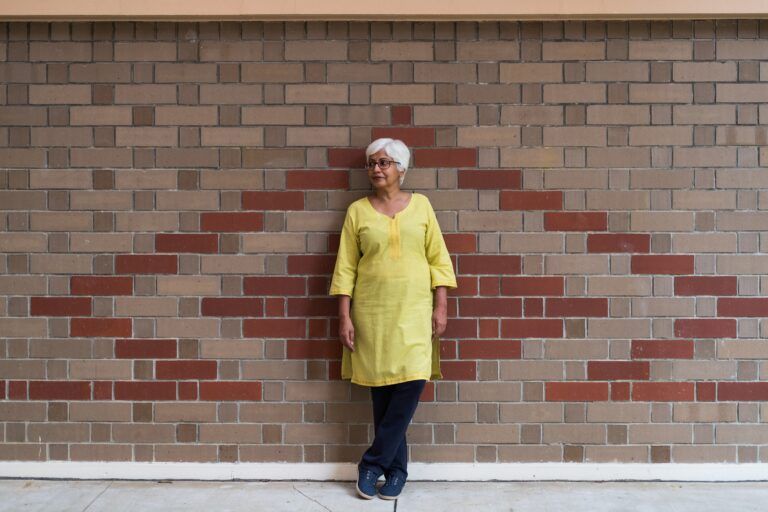“There is no more creative force in the world than the menopausal woman with zest.” Margaret Mead
Change is a universal constant, from the cosmic to the microscopic. The natural rhythm of life is the ebb and flow of activity. While we all experience change in form, function, and spirit from birth till death, as we evolve along the road of life, it is only the mid-life transition for the woman that is dubiously called “The Change.” There is more to this mid-life transformation than “raging hormones.” Research into physiological changes taking place in the menopausal transition reveals that in addition to the end of childbearing and hormonal shifts, there are intricate changes to our nervous systems. Our brains are being rewired, changing how we think and respond to the status quo. Free from childcare responsibilities and caring for aging parents this time of life presents a world filled with possibilities. It is a developmental stage that holds promise for new directions, careers, and purpose. It is a time of life viewed through the wisdom of Chinese medicine called the Second Spring.
As a “Baby Boomer” in the United States, there are more than 48 million of us that are embarking on this new frontier. It is not the menopause of your ancestors. Those born between 1946 and 1964 are the most affluent and influential group in the world. The average life expectancy for a woman born in 1900 was only 40. Today, a woman’s life expectancy is 84. That means that a woman will live another 30 to 40 years beyond menopause! Research by Lydia Bronte, Ph.D. author of The Longevity Factor (Harper Collins, 1993) states that many people will have three different careers over their lifetime. Their first career in their thirties and forties, another in their fifties and early sixties, and another in their seventies, with a major peak in creativity beginning about age fifty. Does that mean the new middle age is from fifty to eighty?
“The heyday of a woman’s life is the shady side of fifty.” Elizabeth Cady Stanton
Menopause is not a disease or an event, but a normal physiological transition occurring between the age 48 – 55 years (average age 51), marked by a shift in the hormonal environment, a decline of ovarian function, and the end of menstrual cycles. The hormones responsible for supporting fertility, estrogen & progesterone decline, while follicle-stimulating hormone (FSH) and luteinizing hormone (LH) rise in an attempt to stimulate the ovaries to respond. The ovaries are the main source for the production of estrogen and progesterone. The body produces various estrogens, estradiol (E2) is the most abundant during the childbearing years and is produced exclusively by the ovaries. After menopause, estrone (E1) is the dominant circulating estrogen, derived from fatty tissue with help in the conversion process from the adrenal glands. During this transitional process, 90% of the women* in the U.S. observe menstrual cycle changes and erratic ovulation patterns over a 4-8 year period of time. The menstrual period may become heavier or lighter and cycles may be delayed or more frequent. Whatever it is, people tend to know it is not their usual pattern and change is underway. Menopause is said to have occurred when a period has been absent for 12 consecutive cycles. Menopause can also occur at any age if the ovaries have been surgically removed or damaged through disease or toxic agents.
This period of hormonal reorganization can create some temporary internal disturbances from time to time. The most common uncomfortable symptom for almost 85% of American women (Asian women significantly less or not at all) is hot flashes. Hot flashes are episodic, vasomotor events where there is an increase in the core temperature. In an attempt to cool the body, surface blood vessels dilate, especially in the area of the chest, neck, and head, perspiration ensues, followed by chills. The hypothalamus, our thermo-regulating center is adjusting to the hormonal shifts. Some sources say 45% of women experience hot flashes for longer than 5 years. Night sweats are nocturnal hot flashes, that contribute to insomnia, accompanied by fatigue the next day, feeling foggy-headed, forgetful, irritable, anxious, headache,y and depressed. Not to mention vaginal dryness and low libido. About 20% of all American women experience no symptoms at all. In some cultures, it is reported that women do not experience any of these symptoms.
Medical management of menopause for many years relied on hormone replacement therapy (HRT). It was thought that a combination of estrogen and progesterone or unopposed estrogen would not only improve the symptoms women were experiencing, but also provide protection against coronary heart disease, breast cancer, and osteoporosis in postmenopausal women. It wasn’t until a long-term 9-year study initiated by the National Institute of Health funded the Women’s Health Initiative to conduct randomized control trials to evaluate the benefits of HRT on decreasing the risks of the leading causes of disease and death in women ages 50-79. 160,000 subjects were recruited to be followed over a 9-year period. The study was halted when evidence revealed that HRT actually increased the risk for coronary heart disease, stroke, pulmonary emboli, and breast cancer, with only a slight benefit to osteoporosis. It was concluded that the risks of HRT outweighed the identified benefits. Recent studies indicate that a brief course of HRT early in menopause is safe and may provide some lasting relief of symptoms.
Currently, doctors are finding some success in symptom relief with the use of antidepressants such as Paxil, Prozac, and Lexapro. Low-dose transdermal patches of Clonidine a blood pressure medication to reduce hot flashes.
Most of the patients we see at the Yinova Center are looking for a safer, more holistic approach to managing their menopause symptoms. The Chinese medical view of menopause is that it is the natural decline of Qi, Blood, and Jing. We focus on the root cause, balancing the Yin and Yang of the body through the energetic system of the Kidney to alleviate the uncomfortable symptoms. We focus on the Kidney because according to traditional Chinese medicine, the Kidney is not only the center of the body’s Yin and Yang but also the foundation for the body’s reproduction and development. Disharmony in the Kidney will affect other organs such as the Liver and Heart systems. As we age, the Essence or Jing (your constitutional strength, drive, energy) stored in the Kidney since birth declines, disrupting the dynamic equilibrium between Yin and Yang. This leads to a Yin deficiency (Yin aspect is cool, moist, quiet, feminine) creating a relative excess of Yang (hot, bright, active, masculine) causing a hyperactive state of Yang leading to hot sensations, red face, headaches, sweating, ringing in ears, dizziness, loss of natural lubrication, constipation and other symptoms.
Acupuncture, herbal remedies, dietary adjustments, exercise, massage, and meditation are the tools we employ when addressing menopausal symptoms. We take into consideration the whole person, knowing that every aspect of a woman’s life can be impacted by this challenging and exciting time. We think of herbal remedies as take-home acupuncture treatments as they solidify the therapeutic goals established in the treatment room. Many of the herbs we prescribe have been studied extensively, proving to be both safe and effective. I would encourage anyone to visit a licensed acupuncturist also a licensed herbalist for the best treatment outcome.
If you’re interested in reading more about menopause, here are some suggested readings:
Discover Your Menopause Type – Dr. Joseph Collins, ND
What Your Doctor May Not Tell You About Menopause – Dr. John Lee




